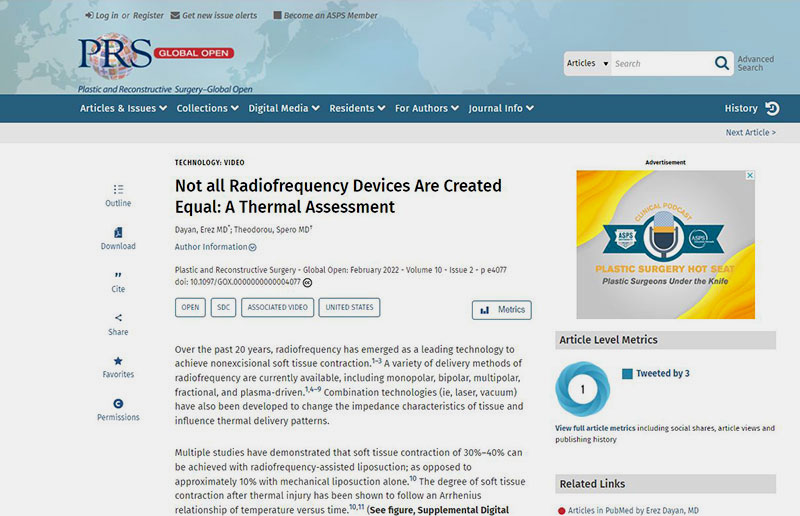Efficiency Of Plasma-Driven vs Bipolar Radiofrequency Devices – An Evaluation
A new study on radiofrequency devices, comparing the efficiency of different devices based on thermal assessment was published in the February 2022, Volume 10, Number 2 issue of Plastic and Reconstructive Surgery–Journal of the American Society of Plastic Surgeons. This informative article is authored by Erez Dayan MD and Spero Theodorou MD.


